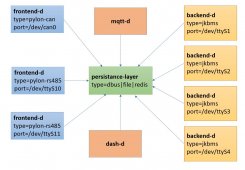Hermanvanveen
New Member
- Joined
- Sep 22, 2021
- Messages
- 19
Hello,
I am planning to use:
- Voltronic Axpert max 8000 all-in-one inverter
- JK bms 200A
- 16x 304 eve cells
I know this inverter has a custom setting option where you can setup all the relevant voltages which suit the battery pack being used.
But I read also that people use a data connection in order to let the bms communicate with the inverter. Mostly I see people use this with EG4 - growatt combinations.
For my hardware situation:
- Is there a possibility to create a data connection between the JK bms and the voltronic inverter?
- If so, does this have any advantage over no data connection in this hardware setup?
Many thanks!
Peter
I am planning to use:
- Voltronic Axpert max 8000 all-in-one inverter
- JK bms 200A
- 16x 304 eve cells
I know this inverter has a custom setting option where you can setup all the relevant voltages which suit the battery pack being used.
But I read also that people use a data connection in order to let the bms communicate with the inverter. Mostly I see people use this with EG4 - growatt combinations.
For my hardware situation:
- Is there a possibility to create a data connection between the JK bms and the voltronic inverter?
- If so, does this have any advantage over no data connection in this hardware setup?
Many thanks!
Peter



